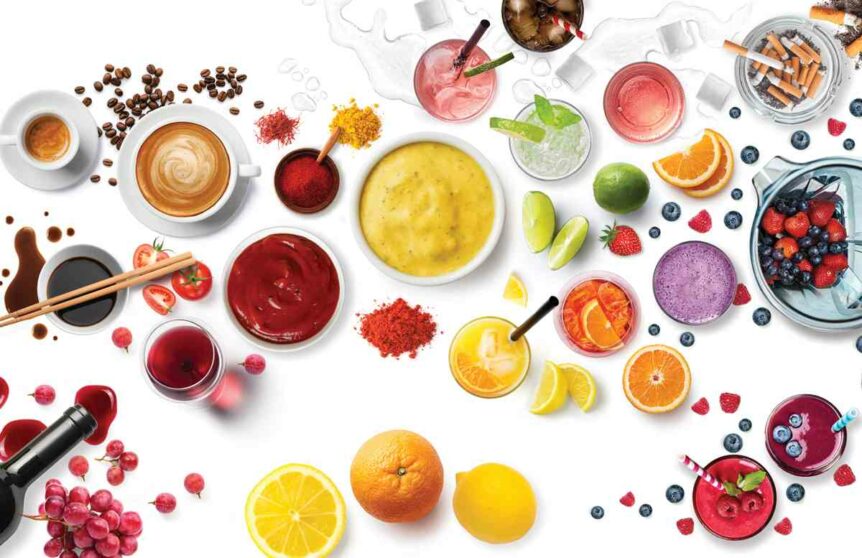Regular brushing and flossing remain your best protection against tooth decay and gum problems. But a tooth-friendly diet can also help keep your smile bright and your gums healthy.
A balanced diet that provides adequate nutrition can help promote healthy teeth. Many nutrients, including vitamin C, vitamin D, calcium and others, are essential to oral health.
Along with eating a healthy diet, it’s smart to limit snacking. The flow of saliva cleanses the mouth and teeth, removing cavity-promoting foods. But “if you snack all the time, you expose your teeth again and again to foods that can erode enamel,” says Anthony M. Iacopino, DMD, PhD, dean of the University of Manitoba Faculty of Dentistry.
The best advice to prevent cavities? Limit your eating to three meals a day, says Iacopino. If you snack, reach for a food that’s less likely to cause tooth decay.
What are your best choices? Here’s the latest on foods to choose — and foods to avoid — in order to keep your teeth healthy and your smile bright.
Foods to Avoid for Healthy, White Teeth
Sugary drinks: When bacteria in the mouth break down simple sugars, they produce acids. These can erode tooth enamel, creating pits where cavities can form. Sugary drinks, including soft drinks and fruit drinks, consist almost entirely of simple sugars.
“Because people tend to sip them, sugared beverages may raise acid levels over a long period of time,” says Steven E. Schonfeld, DDS, PhD, a dentist in private practice and spokesperson for the American Dental Association. “Carbonated drinks are especially bad for teeth, since carbonation increases acidity.” Some studies have singled out sports drinks as the worst offenders for eroding enamel.
Candy and highly-sweetened snacks: Most candies are loaded with sugar, which increases acid levels from bacteria in the mouth. Sticky and gummy candies pose the biggest threat, since they adhere to teeth, making it hard for saliva to wash them away.
Some starchy foods: Starches also raise acid levels from bacteria in the mouth, eroding tooth enamel. Starchy foods include breads, pastas, rice, and potatoes.
The more refined or cooked a starch, the more likely it is to raise acid levels in the mouth. Raw starches in the form of vegetables tend not to endanger tooth enamel.
Sugary breakfast cereals: Foods that contain a mixture of sugar and starch should be avoided. Snacks such as ready-to-eat breakfast cereal, pastries, and many processed foods may be bad for teeth. The combination of starch and sugar is more likely to get stuck in plaque between teeth.
Coffee, tea, and red wine: Sweetened tea or coffee raises acid levels, weakening enamel. And because they are often sipped slowly, acid levels may remain high over a longer period of time, raising the danger. Coffee, tea, and red wine also tend to stain teeth.
Hidden Threats to Your Teeth
Teeth are strong and resilient. But teeth with root canals or fillings are often weakened. Biting down on something hard can cause them to crack or fracture. To avoid trouble, don’t chew ice. Be careful eating olives or fruits that contain pits. Sometimes even foods that have been pitted retain a stray pit. Avoid unpopped popcorn kernels, as well.
Foods to Choose for Healthy, White Teeth
Water: The best thirst quencher is also the smartest choice for your teeth. Water helps wash acid-producing foods from the mouth.
Sugar-free drinks: If you like your water sweetened, choose sugar-free drinks. Because sugar-free drinks wash acid-producing food from the mouth, they may help reduce cavity risk.
Sugar-free chewing gum: Chewing gum increases the flow of saliva, which helps neutralize acids in the mouth, protecting tooth enamel. The flow of saliva also washes food out of the mouth, limiting the amount of time it is in contact with teeth. Sugar-free chewing gum is also a good choice when you crave something sweet.
Citrus fruit: Although it is acidic, citrus fruit increases saliva flow. In fact, research shows that oranges, grapefruits, and other citrus fruit tend to protect tooth enamel. Because citrus fruit contains a lot of water, it also helps wash away acid-producing bacteria.
Cheese and milk: Cheese and milk protect tooth enamel and ward off cavities in several ways. First, they encourage saliva production, which neutralizes acids in the mouth. The protein, calcium and phosphorous in cheese and milk also buffer acids, protecting enamel from erosion. Studies suggest that cheese and milk may even help strengthen the protective minerals in teeth surfaces.
Fish and flax: By far the biggest threat to healthy teeth is gum disease. It occurs when bacteria collect in pockets. This causes inflammation that can damage the connective tissue anchoring teeth to bone. Foods that reduce inflammation may protect against gum disease.
Omega-3 fatty acids are the most potent anti-inflammatory nutrients. This form of fat is found in fish, fish oil, and flaxseed. “People who consume diets high in omega-3s are more resistant to inflammation and infection,” says Iacopino. “We also think they may be more resistant to gum disease.”
Cocoa: Good news for chocoholics: Substances found in cocoa appear to dampen inflammation and may help protect against erosion and decay. Even chocolate milk, although it contains some sugar, doesn’t seem to increase the risk of cavities compared to snacks like cookies, chips, and raisins. Dark chocolate is a good choice, since it is lower in sugar than milk chocolate.WH Family Dental Feature
Sources
SOURCES:
European Food Information Council.
American Dental Hygienists Association.
Anthony M. Iacopino, DMD, PhD, dean, University of Manitoba Faculty of Dentistry.
Steven E. Schonfeld, DDS, PhD, spokesperson, American Dental Association.
Selmi, C. Journal of Cardiovascular Pharmacology, 2007; vol 47 Suppl: pp S163-S171.
Mao, T. Journal of Medicinal Food, Spring 2002; vol 5: pp 17-22.

